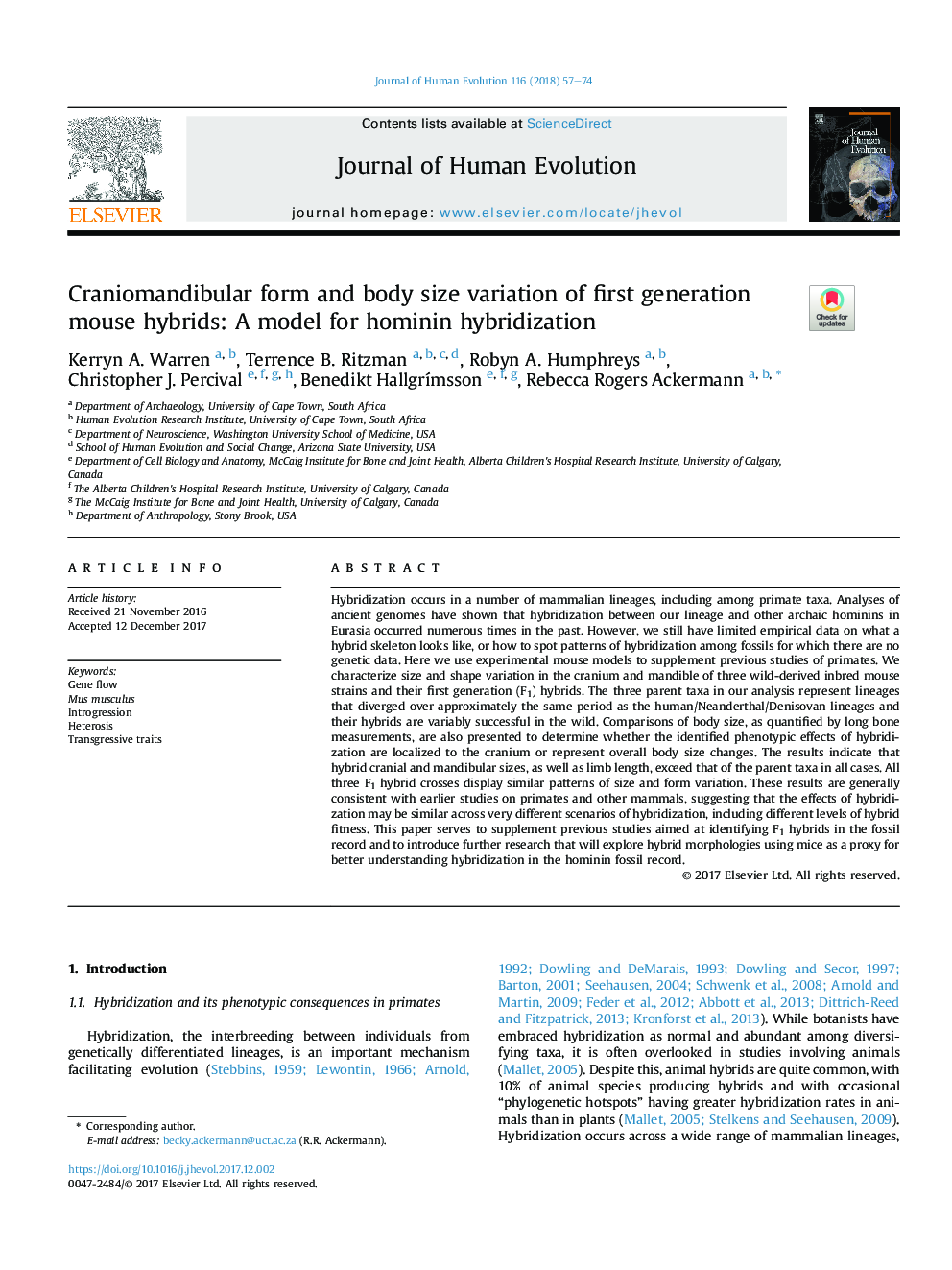| کد مقاله | کد نشریه | سال انتشار | مقاله انگلیسی | نسخه تمام متن |
|---|---|---|---|---|
| 8887302 | 1628133 | 2018 | 18 صفحه PDF | دانلود رایگان |
عنوان انگلیسی مقاله ISI
Craniomandibular form and body size variation of first generation mouse hybrids: A model for hominin hybridization
ترجمه فارسی عنوان
تغییر شکل و اندازه کرنومیاندیبولار هیبریدهای موش اولیه نسل اول: مدل برای هیبریدین
دانلود مقاله + سفارش ترجمه
دانلود مقاله ISI انگلیسی
رایگان برای ایرانیان
کلمات کلیدی
موضوعات مرتبط
علوم زیستی و بیوفناوری
علوم کشاورزی و بیولوژیک
بوم شناسی، تکامل، رفتار و سامانه شناسی
چکیده انگلیسی
Hybridization occurs in a number of mammalian lineages, including among primate taxa. Analyses of ancient genomes have shown that hybridization between our lineage and other archaic hominins in Eurasia occurred numerous times in the past. However, we still have limited empirical data on what a hybrid skeleton looks like, or how to spot patterns of hybridization among fossils for which there are no genetic data. Here we use experimental mouse models to supplement previous studies of primates. We characterize size and shape variation in the cranium and mandible of three wild-derived inbred mouse strains and their first generation (F1) hybrids. The three parent taxa in our analysis represent lineages that diverged over approximately the same period as the human/Neanderthal/Denisovan lineages and their hybrids are variably successful in the wild. Comparisons of body size, as quantified by long bone measurements, are also presented to determine whether the identified phenotypic effects of hybridization are localized to the cranium or represent overall body size changes. The results indicate that hybrid cranial and mandibular sizes, as well as limb length, exceed that of the parent taxa in all cases. All three F1 hybrid crosses display similar patterns of size and form variation. These results are generally consistent with earlier studies on primates and other mammals, suggesting that the effects of hybridization may be similar across very different scenarios of hybridization, including different levels of hybrid fitness. This paper serves to supplement previous studies aimed at identifying F1 hybrids in the fossil record and to introduce further research that will explore hybrid morphologies using mice as a proxy for better understanding hybridization in the hominin fossil record.
ناشر
Database: Elsevier - ScienceDirect (ساینس دایرکت)
Journal: Journal of Human Evolution - Volume 116, March 2018, Pages 57-74
Journal: Journal of Human Evolution - Volume 116, March 2018, Pages 57-74
نویسندگان
Kerryn A. Warren, Terrence B. Ritzman, Robyn A. Humphreys, Christopher J. Percival, Benedikt HallgrÃmsson, Rebecca Rogers Ackermann,
